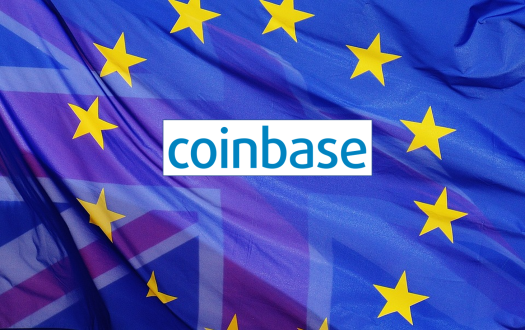
Bitcoin Scalability Solutions Roadmap 2025 Complete Guide to Layer 2 & Beyond
The Bitcoin scalability solutions roadmap has become one of the most critical discussions in cryptocurrency today. As Bitcoin continues to gain mainstream adoption, the network’s ability to handle millions of transactions efficiently remains a pressing concern. The original Bitcoin blockchain processes approximately 7 transactions per second, while traditional payment processors like Visa handle thousands.
Understanding the comprehensive Bitcoin scalability solutions roadmap is essential for investors, developers, and users who want to grasp Bitcoin’s future potential and technological evolution. This roadmap encompasses various innovative approaches, from the widely adopted Lightning Network to emerging sidechains and experimental protocols. Each solution addresses different aspects of Bitcoin’s scalability trilemma while maintaining the network’s core principles of decentralization and security.
Understanding Bitcoin’s Scalability Challenge
Bitcoin’s scalability limitations stem from its fundamental design choices that prioritize security and decentralization. The Bitcoin network processes blocks every 10 minutes, with each block having a size limit of approximately 1 MB. This constraint creates a bottleneck that becomes more pronounced as network adoption increases.
The scalability challenge isn’t merely about transaction throughput. It also involves transaction fees, confirmation times, and network efficiency. During periods of high demand, Bitcoin transaction fees can spike dramatically, making small payments economically unfeasible. This creates barriers to Bitcoin’s use as a medium of exchange for everyday transactions.
The Bitcoin community has long debated various approaches to address these limitations. Some solutions require changes to Bitcoin’s base protocol, while others work as additional layers built on top of the existing network. The current Bitcoin scalability solutions roadmap reflects years of research, development, and community consensus-building.
Layer 2 Solutions: The Foundation of Bitcoin Scalability

Lightning Network: The Premier Scaling Solution
The Lightning Network represents the most mature and widely adopted solution in the Bitcoin scalability solutions roadmap. This second-layer protocol enables instant, low-cost Bitcoin transactions by creating payment channels between users. Participants can conduct numerous transactions off-chain before settling the final balance on the Bitcoin blockchain.
Lightning Network’s architecture involves opening payment channels by creating a multi-signature wallet shared between two parties. These channels can remain open indefinitely, allowing countless transactions without touching the base layer. The network becomes truly powerful when multiple channels connect, creating a web of payment routes that enable transactions between users who don’t have direct channels.
Recent developments in Lightning Network include improved routing algorithms, better liquidity management, and enhanced user experience through wallet integrations. Major exchanges and merchants have begun accepting Lightning payments, demonstrating the solution’s real-world viability. The network’s capacity has grown significantly, with thousands of nodes and millions of dollars in locked Bitcoin.
The Lightning Network faces challenges including liquidity management, channel management complexity, and the need for users to remain online to monitor their channels. However, ongoing developments address these issues through automated tools, watchtower services, and improved wallet software.
Payment Channels and State Channels
Beyond Lightning Network, other payment channel implementations contribute to the Bitcoin scalability solutions roadmap. These solutions create temporary agreements between parties to conduct multiple transactions off-chain before settling on the main blockchain.
State channels extend the concept beyond simple payments to include more complex smart contract interactions. While Bitcoin’s scripting capabilities are more limited than other blockchains, developers continue exploring innovative state channel applications for Bitcoin.
Payment channel factories represent another evolution, allowing multiple users to share a single on-chain transaction to open multiple channels simultaneously. This approach reduces the on-chain footprint required to establish payment networks.
Sidechains and Alternative Approaches
Liquid Network and Federated Sidechains
The Liquid Network operates as a federated sidechain that enables faster Bitcoin transactions and additional features like confidential transactions and issued assets. As part of the Bitcoin scalability solutions roadmap, Liquid serves institutional users and traders who need faster settlement times than the main Bitcoin network provides.
Liquid’s consensus mechanism relies on a federation of trusted entities rather than proof-of-work mining. This trade-off enables faster block times and different feature sets while maintaining a two-way peg with Bitcoin. Users can move Bitcoin into Liquid, conduct transactions quickly and privately, then move back to the main chain when needed.
The network supports confidential transactions that hide transaction amounts while maintaining cryptographic verifiability. This privacy feature appeals to institutions and traders who want to conduct business without revealing sensitive financial information.
RSK and Smart Contract Sidechains
RSK (Rootstock) represents another significant component of the Bitcoin scalability solutions roadmap by bringing Ethereum-compatible smart contracts to Bitcoin. This merge-mined sidechain enables decentralized applications while leveraging Bitcoin’s security through merged mining.
RSK’s virtual machine executes smart contracts while using Bitcoin as the native currency through a two-way peg mechanism. Developers can port Ethereum applications to RSK, expanding Bitcoin’s utility beyond simple transactions to complex financial applications and decentralized services.
The platform supports faster transaction times and lower fees compared to Bitcoin’s main chain while maintaining strong security through merged mining with Bitcoin miners. This approach allows Bitcoin miners to secure RSK without additional computational overhead.
Layer 1 Improvements and Protocol Upgrades
Segregated Witness Impact
SegWit activation in 2017 marked a crucial milestone in the Bitcoin scalability solutions roadmap. This protocol upgrade separated transaction signatures from transaction data, effectively increasing block capacity without changing the 1 MB block size limit. SegWit’s implementation enabled the Lightning Network by fixing transaction malleability, a technical issue that prevented reliable off-chain transaction channels.
The upgrade also introduced a new transaction format that reduces fees for users who adopt SegWit addresses. Adoption of SegWit transactions has grown steadily, with most major wallets and exchanges supporting the format. This widespread adoption continues improving Bitcoin’s transaction capacity and reducing network congestion during peak usage periods.
Taproot and Schnorr Signatures
The Taproot upgrade, activated in 2021, represents the most significant protocol improvement in the Bitcoin scalability solutions roadmap since SegWit. Taproot introduces Schnorr signatures, which enable signature aggregation and improve privacy by making complex transactions look like simple ones. Schnorr signatures allow multiple signatures to be combined into a single signature, reducing transaction size and improving efficiency.
This feature particularly benefits Lightning Network channels and other multi-signature applications common in scaling solutions. Taproot also enhances privacy by making different types of transactions indistinguishable on the blockchain. Whether a transaction involves simple payments, Lightning Network operations, or complex smart contracts, they all appear similar to outside observers.
Emerging Technologies and Future Developments
Rollups and Zero-Knowledge Proofs
While primarily associated with Ethereum, rollup technologies are being explored for Bitcoin scaling applications. Optimistic rollups bundle multiple transactions into a single on-chain transaction, significantly improving throughput while maintaining security through fraud proofs. Zero-knowledge rollups use cryptographic proofs to verify transaction validity without revealing transaction details.
These systems could potentially process thousands of Bitcoin transactions off-chain while providing strong security guarantees through periodic on-chain settlements. Research continues into adapting these technologies for Bitcoin’s unique characteristics and limitations. While implementation challenges exist, rollups represent a promising direction for future Bitcoin scalability solutions.
Bitcoin Improvements Proposals (BIPs) in Development
The Bitcoin scalability solutions roadmap includes numerous BIPs currently under development and discussion. These proposals range from minor efficiency improvements to significant protocol changes that could enhance Bitcoin’s scaling capabilities. Proposals for improved transaction compression, better fee estimation algorithms, and enhanced Lightning Network integration continue advancing through the Bitcoin development process.
The community’s conservative approach to changes ensures thorough testing and broad consensus before implementation. Cross-input signature aggregation represents one promising area of research that could significantly reduce transaction sizes for exchanges and other high-volume users. These improvements would benefit all Bitcoin users through reduced network congestion and lower fees.
Real-World Implementation and Adoption

Exchange and Merchant Integration
Major cryptocurrency exchanges have begun implementing Lightning Network support, enabling instant Bitcoin deposits and withdrawals. This adoption represents a significant step forward in the Bitcoin scalability solutions roadmap practical implementation. Merchants accepting Bitcoin payments increasingly offer Lightning Network options, providing customers with instant, low-cost payment methods.
Payment processors have developed solutions that abstract the technical complexity, making Lightning adoption easier for businesses. The growth of Lightning-enabled applications, from gaming platforms to streaming services, demonstrates the network’s versatility beyond simple payments. These use cases highlight Bitcoin’s potential as a platform for micropayments and innovative business models.
Geographic and Regulatory Considerations
Different regions show varying levels of adoption for Bitcoin scaling solutions. Countries with high Bitcoin usage often see faster Lightning Network adoption, while regulatory uncertainty in some jurisdictions slows implementation. Some nations exploring central bank digital currencies (CBDCs) study Bitcoin’s scaling solutions for insights into digital payment infrastructure.
This attention from traditional financial institutions validates the importance of the Bitcoin scalability solutions roadmap. Cross-border payment applications particularly benefit from Lightning Network’s instant settlement capabilities, offering an alternative to traditional remittance services with lower fees and faster processing times.
Challenges and Limitations
Technical Hurdles
The Bitcoin scalability solutions roadmap faces several technical challenges that developers continue addressing. Lightning Network’s liquidity management requires users to lock funds in channels, creating opportunity costs and capital efficiency concerns. Channel routing optimization remains complex, as payments must find paths through the network with sufficient liquidity.
While routing algorithms improve continuously, the system requires ongoing refinement to handle larger transaction volumes efficiently. Security considerations for Layer 2 solutions differ from Bitcoin’s base layer security model. Users must understand new trust assumptions and operational requirements when using scaling solutions.
User Experience and Education
Widespread adoption of Bitcoin scaling solutions requires significant improvements in user experience and education. Many users find Lightning Network setup and channel management complex compared to traditional Bitcoin transactions. Wallet developers work to abstract technical complexity, but users still need to understand concepts like channel capacity, routing fees, and liquidity management.
Educational resources and improved interfaces remain crucial for broader adoption. The Bitcoin scalability solutions roadmap’s success depends partly on creating solutions that feel as simple and reliable as traditional payment methods while maintaining Bitcoin’s security and decentralization benefits.
Economic Implications and Fee Markets
Transaction Fee Dynamics
Bitcoin’s scaling solutions create complex fee market dynamics as users choose between on-chain transactions and Layer 2 alternatives. The Bitcoin scalability solutions roadmap must balance security incentives for miners with user accessibility and adoption. Lightning Network transactions typically cost fractions of on-chain fees, making micropayments economically viable.
This fee reduction enables new use cases and business models previously impossible with Bitcoin’s main chain limitations. Long-term sustainability requires maintaining sufficient on-chain transaction fees to secure the network as block rewards decrease over time. Scaling solutions must complement rather than replace on-chain activity to preserve Bitcoin’s security model.
Network Effects and Liquidity
The Lightning Network exhibits strong network effects, where increased adoption makes the system more valuable for all participants. More nodes and channels create better routing options and improved reliability for payments. Liquidity provision has emerged as a business opportunity, with specialized services offering routing node operation and channel management.
These services help bootstrap network growth while creating economic incentives for participation. The development of Lightning Network-specific financial products, including yield-generating liquidity provision and channel leasing, demonstrates the ecosystem’s maturation and economic potential.
Comparing Bitcoin Scaling Approaches
Layer 1 vs Layer 2 Trade-offs
Different approaches in the Bitcoin scalability solutions roadmap involve various trade-offs between security, decentralization, and scalability. Layer 1 improvements maintain Bitcoin’s core security properties but require network-wide consensus for implementation.
Layer 2 solutions offer greater flexibility and faster deployment but introduce new trust assumptions and operational complexities. Users must evaluate these trade-offs based on their specific needs and risk tolerance. The optimal scaling approach likely involves a combination of Layer 1 efficiency improvements and Layer 2 solutions that serve different use cases and user requirements.
Interoperability and Standards
Ensuring interoperability between different scaling solutions becomes increasingly important as the ecosystem matures. Standards for Lightning Network invoices, channel backups, and node communication help create a cohesive user experience.
Cross-sidechain interoperability research explores how different Bitcoin scaling solutions can work together seamlessly. These efforts aim to create a unified ecosystem where users can move between different scaling solutions as needed. API standardization and common protocols help developers build applications that work across multiple scaling solutions, improving user experience and reducing development complexity.
Future Outlook and Development Timeline
Short-term Developments (2025-2026)
The immediate future of the Bitcoin scalability solutions roadmap focuses on improving existing solutions rather than introducing entirely new approaches. Lightning Network enhancements, including better routing algorithms and improved user interfaces, remain priorities.
Taproot adoption continues growing, enabling more efficient multi-signature transactions and smart contract applications. This foundational improvement supports various scaling solutions and applications built on Bitcoin. Integration between different scaling solutions improves, creating more seamless user experiences when moving between on-chain and off-chain transactions.
Medium-term Innovations (2027-2030)
Medium-term developments may include more sophisticated sidechain implementations and improved interoperability protocols. Research into Bitcoin-compatible rollup systems could yield practical implementations during this timeframe.
Cross-chain bridges and atomic swaps may mature, enabling Bitcoin to interact more seamlessly with other blockchain networks while maintaining security and decentralization principles. Enhanced privacy features and improved efficiency from ongoing research could further optimize Bitcoin’s scaling capabilities without compromising its core values.
Also Read: Bitwise Doubles Bitcoin Price Target Amid Economic Uncertainty
Long-term Vision
The long-term Bitcoin scalability solutions roadmap envisions a multi-layered ecosystem where different solutions serve specific use cases efficiently. Base layer Bitcoin provides ultimate security and settlement, while various Layer 2 solutions handle different transaction types and volumes.
This vision includes seamless integration between scaling solutions, advanced privacy features, and support for complex financial applications while maintaining Bitcoin’s decentralized nature and security properties. Success depends on continued innovation, community consensus-building, and real-world adoption that demonstrates these solutions’ practical value and reliability.
Conclusion
The Bitcoin scalability solutions roadmap represents one of cryptocurrency’s most important technological developments. From the Lightning Network’s practical implementation to emerging technologies like rollups and advanced sidechains, Bitcoin’s scaling ecosystem continues evolving to meet growing demand while preserving the network’s core principles.
Understanding and following the Bitcoin scalability solutions roadmap is essential for anyone involved in Bitcoin’s ecosystem. Whether you’re an investor, developer, or user, staying informed about these developments helps you make better decisions and take advantage of Bitcoin’s expanding capabilities. The future of Bitcoin depends on successfully implementing these scaling solutions while maintaining the principles that make Bitcoin valuable and unique.







